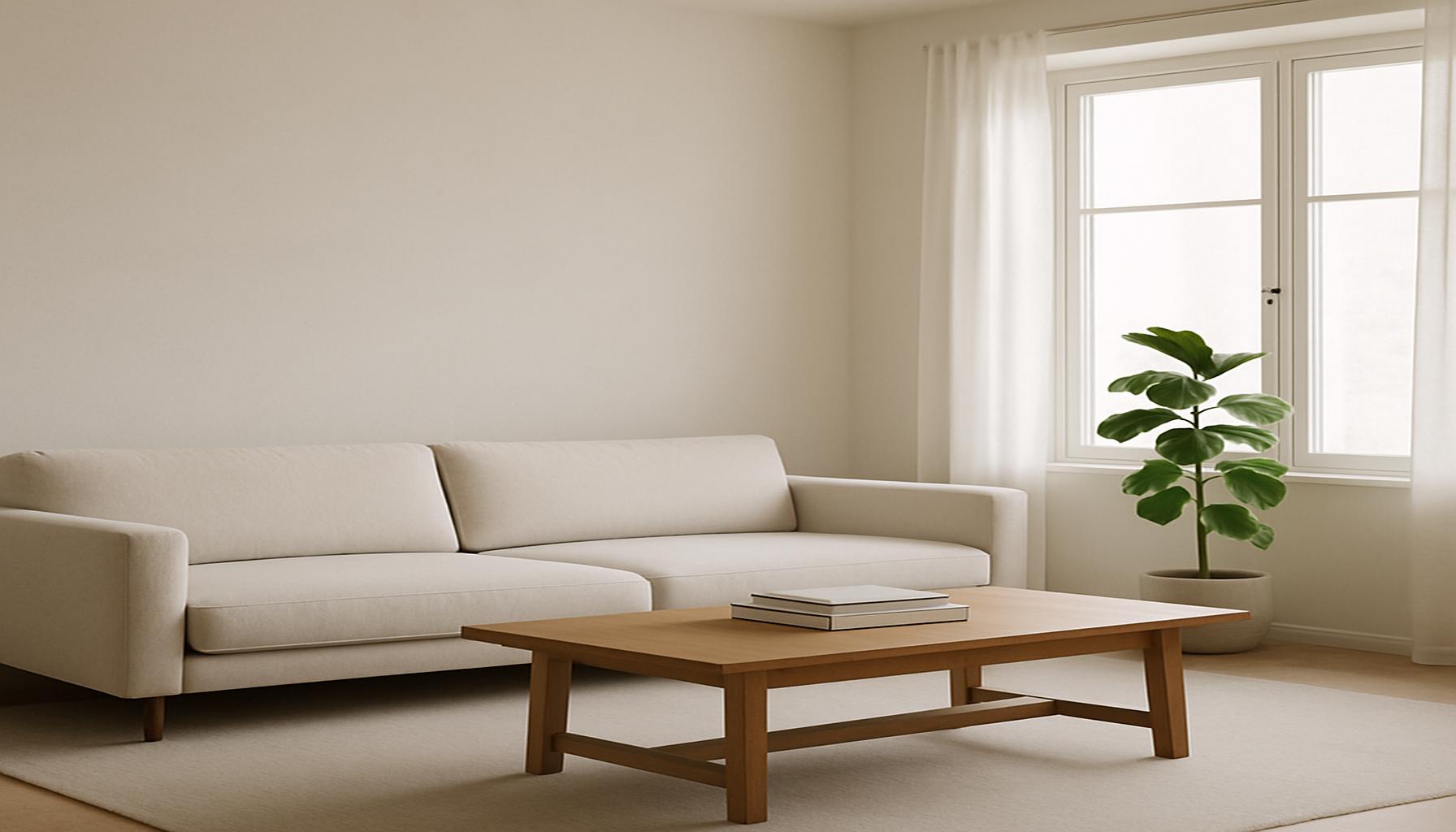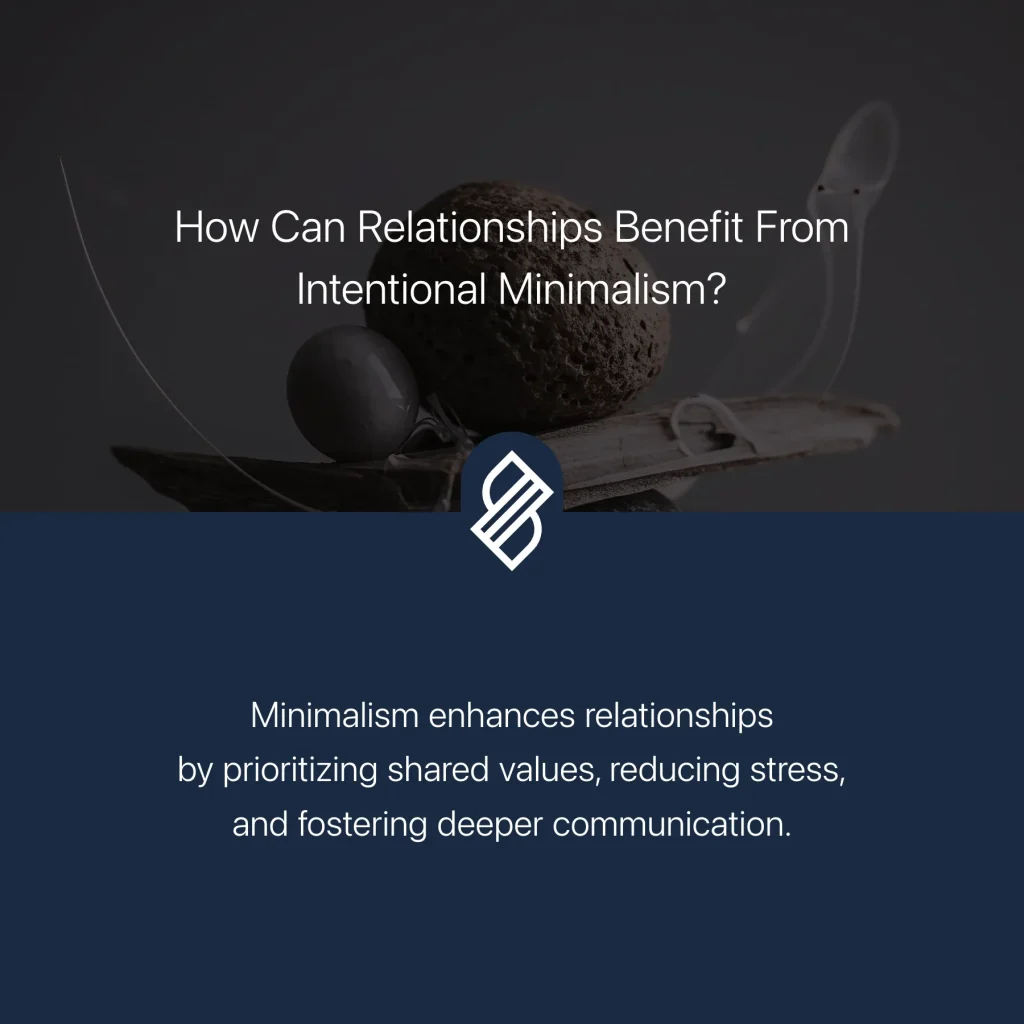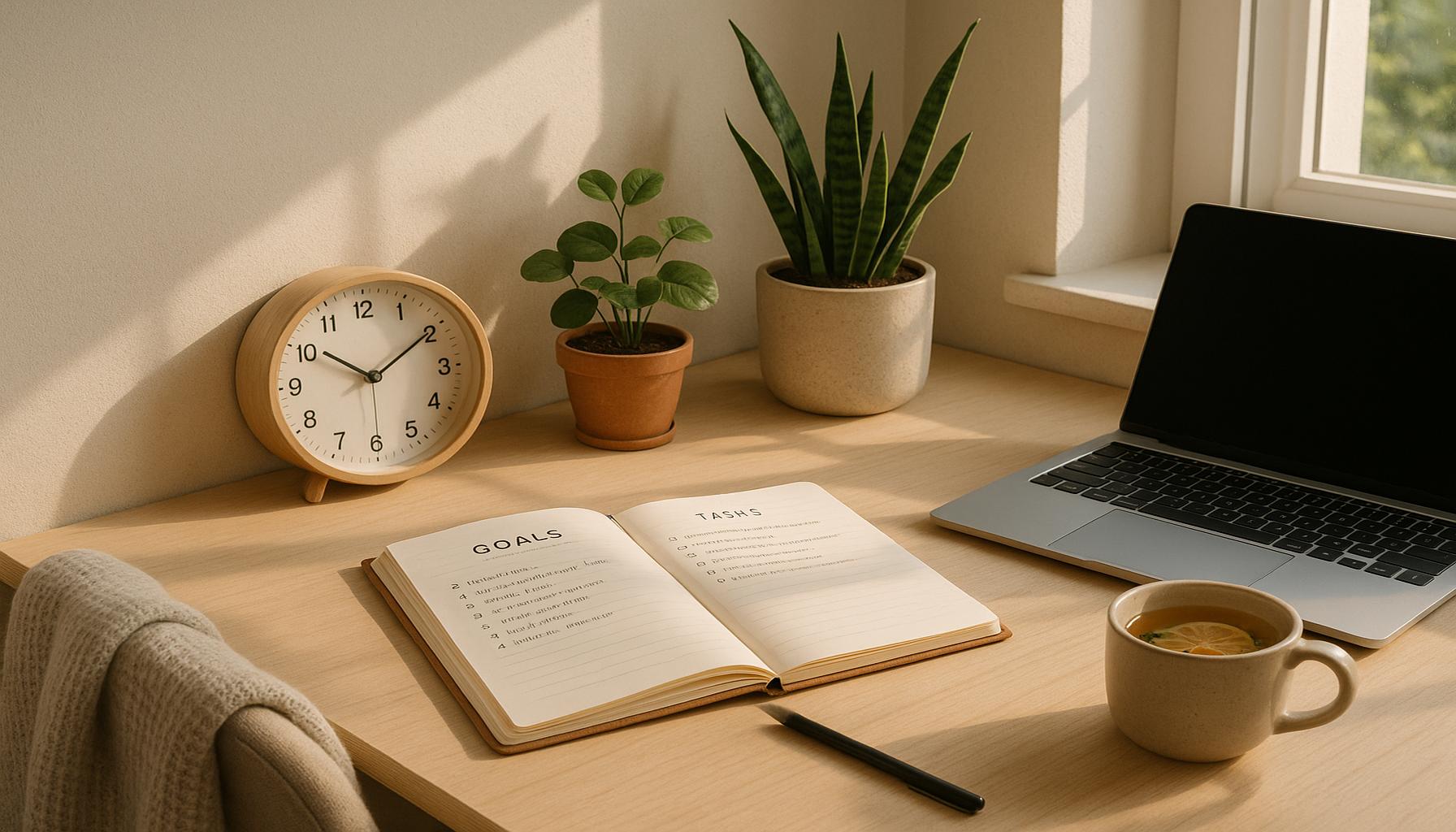Intentional Minimalism How Home Items Reflect Our Priorities

Understanding Intentional Minimalism
In a world bursting with consumerism, the rise of minimalism presents a refreshing alternative. Minimalism encourages individuals to prioritize quality over quantity, prompting them to evaluate the significance of every item in their living space. This intentional approach to home organization not only reduces clutter but also aligns personal spaces with one’s values and aspirations.
The Importance of Reflection
Every item in our home can serve as a reflection of who we are and what we prioritize. By embracing intentional minimalism, we can create environments that promote clarity, focus, and a sense of well-being. This method challenges us to ask pivotal questions about our belongings: Do they enhance our lives? Do they resonate with our core values?
What to Expect
In this article, we will explore the concept of intentional minimalism and delve into how each item in our homes can embody our true priorities. We will present a Top 5 list of essential principles, resources, and items that can guide you on this journey toward a more meaningful living space. Prepare to uncover insightful strategies that can transform your home into a sanctuary of intentionality.
Top 5: Intentionality in Creating Minimalist Spaces: How Every Item in Our Home Can Reflect Our Priorities
In an age dominated by consumerism and clutter, the concept of minimalism offers a refreshing lens through which to view our living spaces. It encourages us to be intentional about what we own and how we organize our environments. At the core of minimalism lies a powerful principle: every item in our homes should not only serve a purpose but also reflect our values and priorities. In this article, we will explore the top five ways to harness this intentionality in your living space, encouraging a lifestyle that brings peace and clarity.
5. Evaluate Your Needs
Before diving into minimalism, it is essential to take stock of what truly matters to you. Understanding your personal and family needs is the cornerstone of creating a minimalist space. This initial phase requires a candid assessment of your daily habits and emotional attachments to possessions. Ask yourself:

- What do I use daily? — Identify items integral to your day-to-day routine. These essentials should be easily accessible and well-maintained.
- What items evoke joy or have sentimental value? — While minimalism often entails reducing belongings, it does not mean eliminating joy. Cherish and display objects that hold special meaning.
- Are there things in my home that no longer serve a purpose? — Pay attention to items that simply take up space and add stress instead of value.
By evaluating the necessity of each item, you lay the groundwork for a home filled only with those things that add value to your life. This is a mindful practice, not about discarding items blindly but about cultivating an environment that reflects your genuine priorities.
4. Designate Functional Zones
Creating functional zones in your home is crucial for an organized minimalist environment. Each area should serve a distinct purpose, which can help streamline your daily activities. Organized spaces are easier to navigate, reduce stress, and increase productivity. Consider transforming your home into a collection of zones:
- Relaxation Zone: A comfortable area for reading or unwinding. This might include a plush chair, soothing lighting, and quiet surroundings.
- Work Zone: A clutter-free space dedicated to work or hobbies. Ensure good lighting, ergonomic furniture, and necessary tools organized within arm’s reach.
- Entertainment Zone: Designed for social gatherings. Incorporate seating arrangements that facilitate group interaction and a simple, versatile layout.
By clearly defining these zones and eliminating unnecessary items from each, you create an environment that supports your lifestyle and aspirations. It’s less about strict boundaries and more about flow and functionality, allowing you to move seamlessly through your living space.
3. Choose Quality Over Quantity
In a minimalist approach, quality reigns supreme. When selecting items for your home, prioritize well-made, durable goods that truly reflect your style and values. Quality not only ensures longevity but often carries a narrative of craftsmanship and heritage. Avoid succumbing to the temptation of buying multiple inexpensive items that may clutter your space over time.
Consider investing in timeless furniture that serves multiple purposes, art pieces from local artisans that tell a story, or eco-friendly products that align with sustainable living values. High-quality items often inspire a deeper emotional connection. For instance, a handcrafted chair can serve as both a functional seat and a statement piece. This shift in focus alleviates the pressure to constantly replace items and positively shapes your residential environment.
2. Establish a Minimalist Mindset
Transitioning to minimalism is as much about mindset as it is about physical space. Embracing a minimalist mindset forces you to confront the emotional and psychological attachments you have to your belongings. Ask yourself:
- What purpose does this item serve in my life? — Consider the functional or emotional utility of your possessions.
- Why do I feel compelled to keep it? — Is it due to a sense of obligation, fear of scarcity, or genuine enjoyment?
- How does clutter affect my mental state? — Reflect on the correlation between a cluttered space and your stress levels or clarity of thought.
As you develop this awareness, it becomes easier to let go of possessions that don’t align with your priorities. This mental shift encourages a more intentional approach to future purchases and helps maintain a clear, calming environment. In essence, minimalism transforms your home and mind into a sanctuary of purpose and peace.
1. Reflect Your Values in Your Space
The pinnacle of intentionality in minimalist design is creating a space that authentically reflects your values and priorities. This involves surrounding yourself with items that resonate on a personal level, whether it’s art created by local artists, books that inspire intellectual growth, or plants that promote wellness.
To reflect your values through your space, consider these strategies:
- Art and Decor: Choose pieces that inspire you and tell your story. Whether it’s family photos, travel mementos, or paintings, having decor that enriches your personal narrative is powerful.
- Functional Items: Select multi-functional furniture that serves a dual purpose and complements your lifestyle. A foldable desk doubles as a dining table, offering flexibility and conserving space.
- Meaningful Objects: Keep items that hold sentimental value and enhance your daily life. This could be a grandmother’s quilt, a piece of handmade pottery, or a book collection.
When your home embodies your core values, it transforms into a sanctuary that nurtures well-being and inspires a life of purpose and intention. Each item becomes a testament to your journey, illuminating the narrative of who you are and what you cherish. It beckons an authentic existence where nothing is superfluous, and everything holds meaning.
In conclusion, the intentionality in creating minimalist spaces is about more than just reducing clutter; it’s about cultivating an environment that reflects your deepest values and priorities. By evaluating your needs, structuring zones, valuing quality over quantity, fostering a minimalist mindset, and reflecting your values through your belongings, you can create a home that truly supports and enhances your life in subtle, yet profound ways.
The essence of a minimalist space is rooted in intentionality, allowing each item to serve a purpose that aligns with one’s values and priorities. This concept does not merely revolve around decluttering physical objects; it extends into the realm of emotional and psychological well-being, influencing how one interacts with their environment.One significant aspect of intentionality in minimalist design is the act of careful selection. When curating a living space, individuals are encouraged to choose only those items that resonate with their identity or evoke positive emotions. For example, a piece of art may hold memories of a cherished experience, while a well-crafted chair can enhance comfort and functionality. This intentional selection imbues each object with meaning, creating a narrative that is unique to the homeowner.Moreover, the psychological impact of minimalism cannot be underestimated. Environments saturated with excessive decor and clutter often lead to feelings of chaos and stress. By contrast, a minimalist approach fosters clarity and tranquility, allowing individuals to focus on what truly matters—be it personal relationships, creative endeavors, or professional aspirations. Spaces that are thoughtfully designed can act as sanctuaries for reflection and inspiration.The minimalist philosophy also encourages maintaining only those items that reflect one’s current lifestyle and aspirations. This practice of continually evaluating possessions helps eliminate distractions, paving the way for more meaningful experiences. For instance, a kitchen equipped with only essential tools streamlines meal preparation and promotes healthier cooking habits, affirming one’s commitment to wellness.Additionally, minimalism presents a sustainable approach to living. By prioritizing quality over quantity, individuals can choose eco-friendly materials and products. This not only minimizes environmental impact but also communicates a strong message about personal values regarding the planet’s health and sustainability.In sum, the journey toward an intentional minimalist space transcends aesthetic considerations; it encompasses a deeper relationship with one’s environment. Every decision—from the choice of furniture to the color scheme—can act as an extension of an individual’s values and aspirations. Embracing this philosophy allows one to curate a home that is not merely functional but also a reflection of life’s most important priorities. Each corner of the space can serve as a reminder of what matters most, guiding inhabitants toward a fulfilling, intentional lifestyle.
Frequently Asked Questions about Intentionality in Creating Minimalist Spaces
What does it mean to be intentional about the items in my home?
Being intentional about the items in your home means deliberately choosing what you allow in your space. This involves assessing each item’s purpose and ensuring it aligns with your personal values and priorities. The idea is to surround yourself only with items that bring joy or serve a practical function, reducing clutter and fostering a sense of peace. By doing so, you’re not just simplifying your physical environment; you’re also simplifying your mental space and focusing on what truly matters.
How can I start creating a minimalist space in my home?
Starting to create a minimalist space involves both planning and execution. Begin by assessing your belongings and categorizing them based on their importance and utility. Ask yourself questions like: Does this item serve a purpose or bring me happiness? If not, it might be time to let go. Focus on quality over quantity. Remember, the goal is not to live with as little as possible, but to live with what truly matters to you. You can also seek inspiration from minimalist design concepts and adapt them to reflect your personal style.
Is it possible to have a minimalist home without sacrificing comfort and personal style?
Absolutely. Minimalism doesn’t equate to deprivation or aesthetic sterility. It’s about curating a space that balances simplicity, functionality, and personal expression. Comfort and personal style can and should coexist within minimalist principles. Choose items that are both functional and visually pleasing to you. Materials, colors, and design elements that resonate with your identity can be part of a minimalist home. The key is to ensure they contribute meaningfully to the overall harmony of the space.
How does minimalism reflect personal priorities and values?
Minimalism is not just a design choice but also a lifestyle that emphasizes prioritization and mindful living. By focusing on fewer, more meaningful possessions, it reflects a conscious decision to value quality over quantity, experiences over things, and substance over style. This approach encourages you to be mindful of what you invite into your home, ensuring each item reflects your values, whether that means sustainability, functionality, or aesthetic preference. Ultimately, minimalism can act as a mirror to your deepest priorities, challenging you to live authentically and intentionally.
What are some common misconceptions about minimalism in homes?
One prevalent misconception is that minimalism requires living in a stark, bare environment devoid of character or personal touches. In reality, minimalism is a flexible philosophy that can be adapted to suit different lifestyles and preferences. Another myth is that minimalism equates to a “one-size-fits-all” approach; however, every minimalist journey is unique to the individual. Additionally, it’s often thought that achieving minimalism requires getting rid of everything, but a key component of minimalism is balance—keeping what’s essential and valuable to you. Minimalism is about creating space for a meaningful life, not just an empty room.
Conclusion
In exploring the realm of minimalism and personal organization, we find that intentionality in our living spaces is pivotal. A minimalist environment not only offers aesthetic appeal but also serves as a potent reflection of our actual priorities. By intentionally choosing the items we keep, we embark on a deeper understanding of what truly matters.
The article delved into the top five considerations for creating such spaces, emphasizing the importance of decluttering as the first step. Removing unnecessary items allows us to focus on essentials that genuinely contribute to our lives. Moreover, each carefully selected piece should not only serve a function but also bring joy or value. This underlines the core element of minimalism—quality over quantity.
Furthermore, aligning our spaces with our personal values enhances mental clarity and emotional wellbeing. Our homes become sanctuaries that both nourish and inspire. By adopting minimalist principles, we cultivate an environment that supports a focused and meaningful lifestyle.
As trends continue to evolve, minimalism remains a compelling approach for those seeking simplicity and mindfulness. Its influence extends beyond mere aesthetics, challenging us to continuously evaluate and refine our living spaces to better mirror our deepest intentions. As you ponder your own minimalist journey, consider how each element within your home is a testament to your life’s narrative.
In a world often dominated by excess, embracing minimalism is not merely a design choice but a profound declaration of purpose. Let this exploration motivate you to uncover new insights and to nurture the spaces that truly reflect your unique values.


